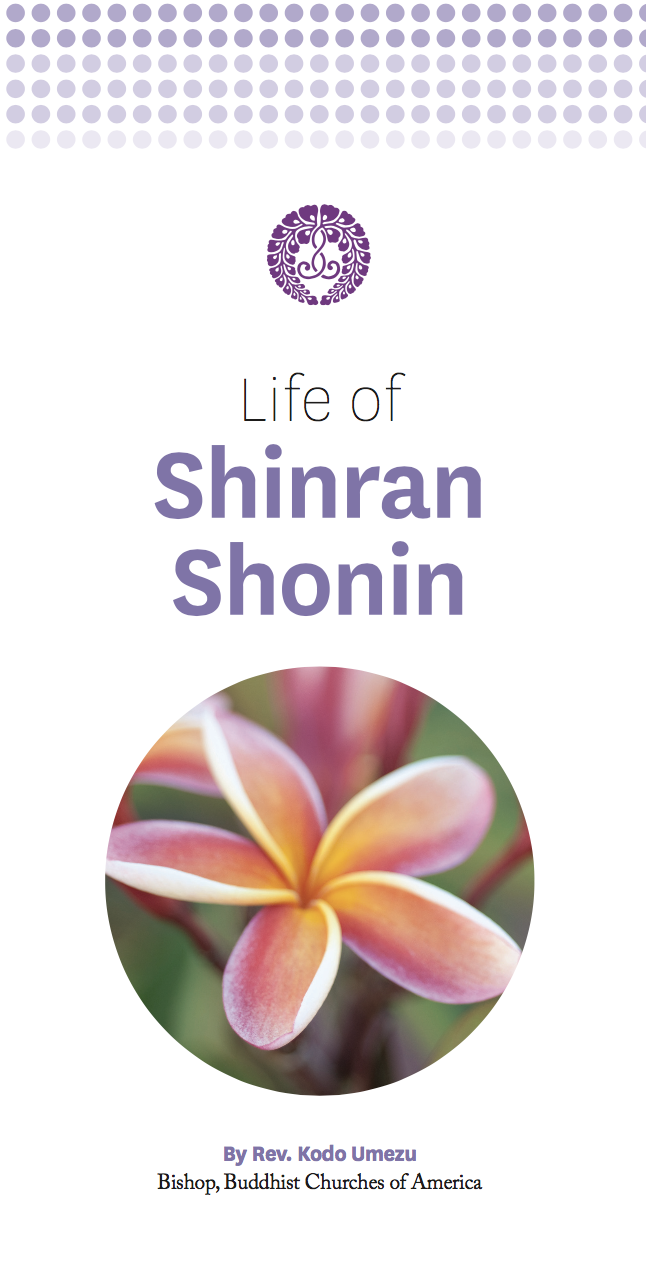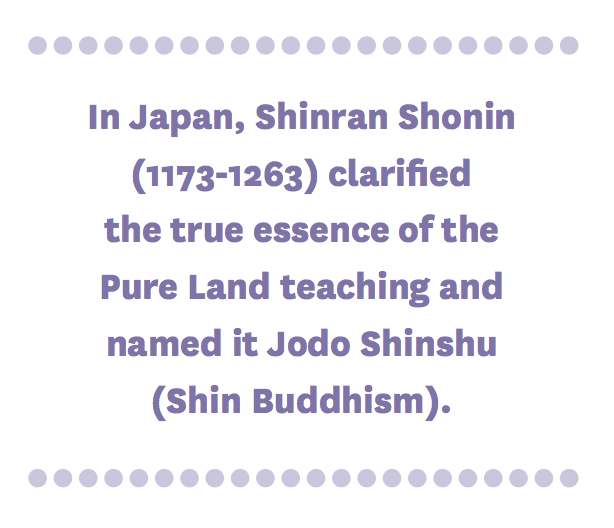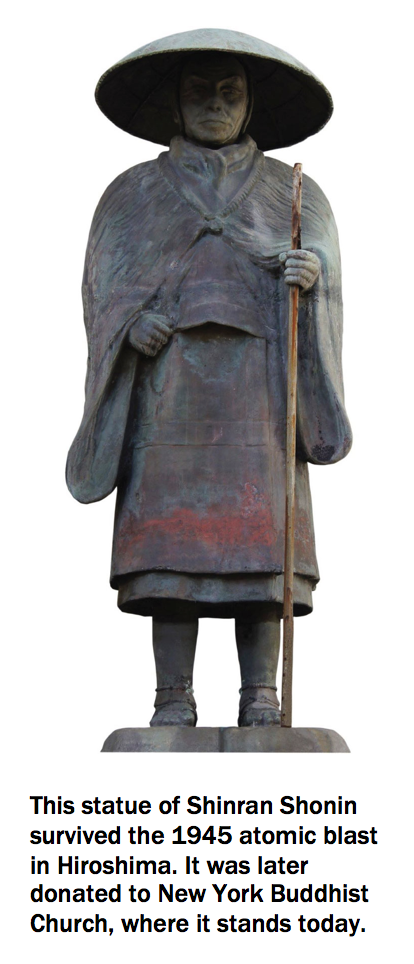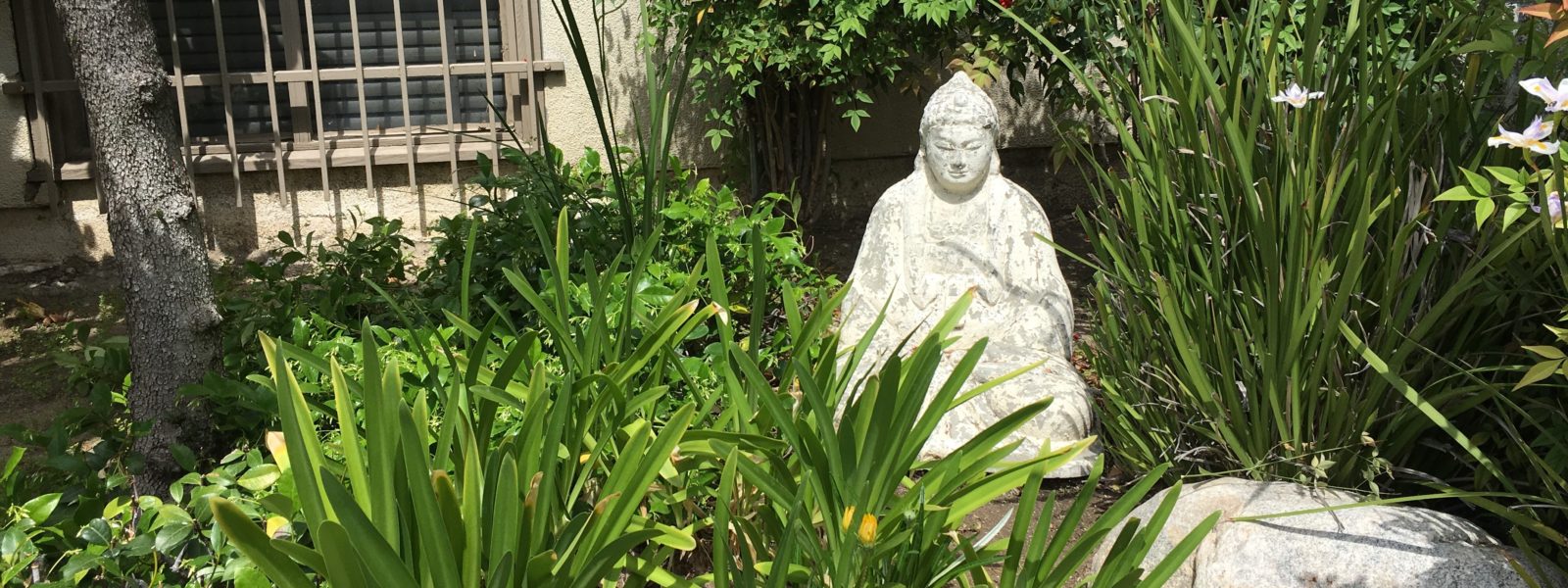Shinran Shonin
 Shinran is revered as the founder of Jodo Shinshu (Shin Buddhism). However, in his writings we find no evidence of the intention to found a new school of Buddhism. On the contrary, Shinran repeatedly identifies himself as a humble student of his master Honen Shonin (aka Genku). We, as followers of the Jodo Shinshu tradition, call him Shinran Shonin. The word “Shonin” means a sacred person or a master.
Shinran is revered as the founder of Jodo Shinshu (Shin Buddhism). However, in his writings we find no evidence of the intention to found a new school of Buddhism. On the contrary, Shinran repeatedly identifies himself as a humble student of his master Honen Shonin (aka Genku). We, as followers of the Jodo Shinshu tradition, call him Shinran Shonin. The word “Shonin” means a sacred person or a master.
His Life: Matsuwaka
Born to the Hino family, a branch family of the powerful Fujiwara clan, on May 21, 1173, his first given name was Matsuwaka-maru. Tragedy and death separated him from his parents while he was very young. At the age of nine, he was taken by an uncle to the Shoren-in Temple to receive ordination as a Buddhist monk. At that time he received the Buddhist name, Han-nen.
Han-nen
For twenty years, Han-nen studied and practiced intensely according to the Tendai tradition on Mount Hiei. However, his efforts did not free him from his blind passions. Frustrated, Han-nen abandoned his life at Mt. Hiei at age 29, and spent 100 days in seclusion at the Rokkakudo Temple in Kyoto. There he hoped to receive inspiration and guidance from Kannon Bodhisattva. On the 95th day, Han-nen had a vision that revealed to him the direction of his path to enlightenment.
Han-nen immediately left Rokkakudo to visit Honen Shonin at Yoshimizu Temple in Kyoto. Han-nen was moved by Honen Shonin’s straightforward teachings on the Pure Land path. Han-nen visited Honen Shonin for 100 days to listen to him preach to young and old, rich and poor, men and women of high and low classes. The message was fresh and eye-opening to him. Honen Shonin taught that Amida Buddha, knowing our true human condition, selected the recitation of the Buddha’s name Namu Amida Butsu (known as the Name of Amida Buddha) as the practice that leads to Awakening. Reciting the name, he said, is sufficient to assure one’s birth in the Pure Land.
Shakku
In 1201, Han-nen was accepted as Honen Shonin’s disciple and given a new Buddhist name, Shakku. Shakku continued to deepen his understanding of the true meaning of the Nembutsu practice. Over time, he came to realize that reciting the name is not the most important thing in itself, but rather, it is finding the true intent of the recitation practice.

As Honen Shonin’s Nembutsu teaching attracted more and more followers, it also attracted opposition from the established Buddhist monks on Mt. Hiei and in Nara. They used the misconduct of a small group of Nembutsu followers as a pretext to request that the Imperial Court disband the Yoshimizu group and prohibit the Nembutsu teaching. Finally, in 1207, an Imperial order was issued. Some Nembutsu followers were executed and Honen Shonin and Shakku were exiled to separate, remote areas of Japan. At this time, Shakku was 35 years of age, and Honen Shonin was 75. The teacher and disciple would never meet again.
Shinran
Stripped of his position and Buddhist name, he was sent to Echigo Province in present-day Niigata Prefecture. He changed his name to Gutoku Shaku Shinran. “Gutoku” means “the ignorant, stubble-haired one” and reflects his deep humility and self-awareness. He, however, used the opportunity of exile to spread the Nembutsu teaching. He was married to Eshinni and started a family. After five years, Shinran Shonin and Honen Shonin were pardoned. However, Honen Shonin died two months later.
In 1214, Shinran Shonin and Eshinni decided to relocate to Hitachi Province (present-day Ibaraki Prefecture) in the Kanto region. There, he started to write Kyo-Gyo-Shin-Sho, a six-volume work clarifying the Nembutsu teaching’s relationship to Buddhist doctrine. At the same time, he traveled broadly to share the Nembutsu teaching with local people. He spent more than twenty years spreading the Dharma.
Around the age of 62, Shinran Shonin decided to go back to Kyoto to finish his work. His wife, Eshinni, returned to her hometown in Echigo. Shinran Shonin lived in Kyoto until he passed away at the age of 90 on January 16, 1263.
Based on Jodo Shinshu: A Guide (Hongwanji International Center, Kyoto, Japan, 2002).
PURE LAND BUDDHISM: A Fruit of the Mahayana Tradition
As a major tradition in the Mahayana movement, Pure Land Buddhism has been a source of inspiration and guidance for Buddhists throughout Eastern and Central Asia for many centuries.
The essence of Mahayana Buddhism is found in the Pure Land teaching. The Pure Land is presented to us as the realm where everyone without exception is able to attain Buddhahood, or enlightenment, by performing certain practices.
 In Japan, Shinran Shonin clarified the true essence of the Pure Land teaching and named it Jodo Shinshu (Shin Buddhism). He wrote the Kyo-Gyo-Shin-Sho in order to advocate Shin Buddhism as the most timely and appropriate teaching for ordinary people to follow. According to D. T. Suzuki, “The Japanese may not have offered very many original ideas to world thought or world culture, but in Shin we find a major contribution that the Japanese can make to the world and to all other Buddhist Schools.”*
In Japan, Shinran Shonin clarified the true essence of the Pure Land teaching and named it Jodo Shinshu (Shin Buddhism). He wrote the Kyo-Gyo-Shin-Sho in order to advocate Shin Buddhism as the most timely and appropriate teaching for ordinary people to follow. According to D. T. Suzuki, “The Japanese may not have offered very many original ideas to world thought or world culture, but in Shin we find a major contribution that the Japanese can make to the world and to all other Buddhist Schools.”*
We, the followers of this tradition, deeply appreciate the rich history of Buddhism and wish to share this teaching with others. Whoever touches the heart of the Buddha through the Pure Land teaching will be able to live a life of fulfillment, appreciation, joy, and humility in the here and now.
*D.T. Suzuki, Buddha of Infinite Light (Boston & London: Shambhala, 1998), p. 21.
Rev. Kodo Umezu, Bishop, Buddhist Churches of America
Produced by the Center for Buddhist Education, October 2015.
Life of Shinran Shonin Brochure (PDF)
Continue to Eshinni and Kakushinni: The Beginnings of the Jodo Shinshu organization

